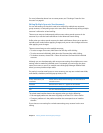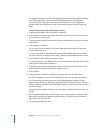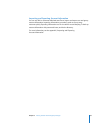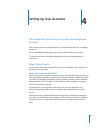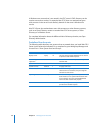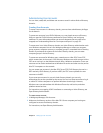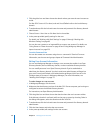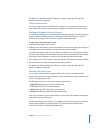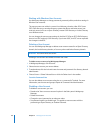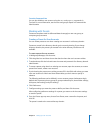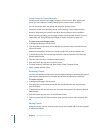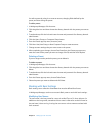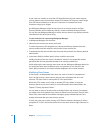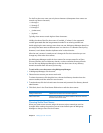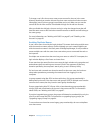
Chapter 4 Setting Up User Accounts 59
For details, see “Working with Basic Settings” on page 63 through “Working with
Windows Settings” on page 85.
From the Command Line
You can also edit user account information using the dscl command in Terminal. For
more information, see the users and groups chapter of Command-Line Administration.
Working with Read-Only User Accounts
Use Workgroup Manager to review information about user accounts stored in read-only
directory domains. Read-only directory domains include LDAPv2 domains, LDAPv3
domains not configured for write access, and BSD configuration files.
To work with a read-only user account:
1 In Workgroup Manager, click Accounts.
2 Make sure that the directory services of the Mac OS X Server computer you’re using are
configured to access the directory domain where the account resides.
For information about using Directory Utility to configure server connections, see Open
Directory Administration. For information about the user account elements that need to
be mapped, see the appendix, “Importing and Exporting Account Information.”
3 Click the globe icon and choose the directory domain where the user’s account resides.
4 Review the user’s account settings using the panes provided.
For details, see “Working with Basic Settings” on page 63 through “Working with
Windows Settings” on page 85.
Working with Guest Users
You can set up some services to support guest users, who are not authenticated
because they don’t have a valid user name or password. You don’t need to create a user
account to support guest users.
The following services can be set up to support guest access:
 Apple file service. See File Services Administration.
 FTP service. See File Services Administration.
 Web service. See Web Technologies Administration.
 Windows services. See Open Directory Administration.
Users who connect to a server anonymously are restricted to files, folders, and websites
with permissions set to Everyone.
Another kind of guest user account is a managed user account that you can configure
for easy setup of public or kiosk computers. For more about these kinds of user
accounts, see Chapter 10, “Managing Preferences.”



